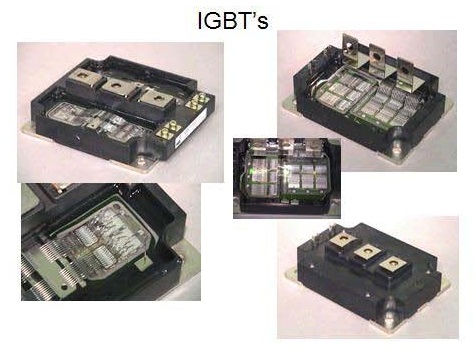
Controls & Transformers
Questions and Answers
Duty cycle is used to determine the actual work that the power system of a resistance welder is performing. Machines by design are not meant to exceed 50% duty cycle. The cables, shunts, transformer, controls and all conductors are designed with this value. If exceeded the life of the machine components will be shortened dramatically.
Knowing at what level you operate at is important in setting your weld schedules. The formula shown below is based upon standard AC - 60 cycle welding with a one minute integration time period.

These IGBT's would be mounted on a water cooled copper plate.
Reference: RWMA - Resistance Welding Manual 4th Edition
IGBT’S are the switching devices in inverter controls. They handle large amounts of power during resistance welding and can heat up. Yes, they must be cooled. They are normally mounted on a water cooled plate to remove the heat. IGBT's are indirectly cooled with this mounting system.
For AC welding it is important to operate at a relatively high percent heat. This gives you the maximum efficiency and minimum off time during each weld cycle of the sine wave. So your weld schedule should be designed to optimize this situation as opposed to a high tap and a low setting where a large percentage of the time (each cycle) there is no current flow and the weld is actually cooling down.
High frequency welding offer many advantages. Weight reduction and reduced power requirements are just part of the advantage. These advantages can add up in a large plant with many weld cells.
High frequency welding offer many advantages. The inverters found in many plants today offer both weight and power reductions. These changes can add up in a large plant with many weld cells.
Page 23 of 39
Have a Question?
Do you have a question that is not covered in our knowledgebase? Do you have questions regarding the above article? Click here to ask the professor.
